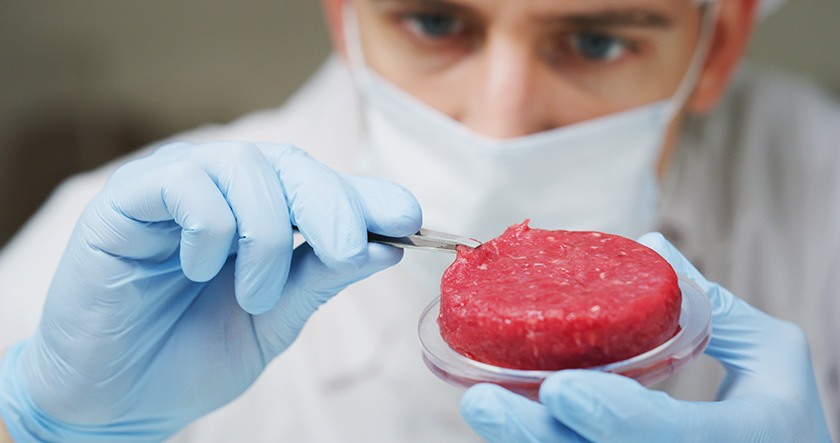More news
- Asian paint regulatory round up – Indonesian exterior paint still uses lead, warns W...
- Nigeria’s paint industry navigates regulatory changes and economic challenges amid p...
- Focus on the global coatings market: Global coatings market outlook
- Innovative coatings mitigate effects of deepening climate change
- Ask Joe Powder – October 2024

Osaka University, Shimadzu, Itoham Yonekyu, Toppan Inc, and SIGMAXYZ have established ‘the future creation consortium for cultured meat.’ The consortium plans to develop the techniques needed to create cultured meat, as well as promote the sustainability and health benefits of using lab-grown proteins.
The centres for research promotion are located at Osaka University.
Toppan’s role as an operating partner includes optimisation of muscle and fat fibre structure produced by 3D bio-printing cultured meat production technology; development of extracellular matrix materials (bio-ink and binding materials); and promotion of peripheral technology development that contributes to primary packaging, etc.
The consortium focuses on “concrete initiatives for practical implementation of the manufacturing technology of edible cultured meat using 3D bio-printing.” Through cross-company collaboration, the consortium will carry on developing 3D bio-printing technology for application, establishing an integrated value chain from production to logistics, and contributing to legislation through collaboration with government offices and private companies.
By exhibiting at the 2025 World Exposition in Osaka, Kansai, the consortium will concentrate on providing information that helps people understand cultured meat, aiming to realise the world’s first use of cultured meat.

The 3D bio-printing technology developed by Osaka University can freely produce muscle tissue structures and is expected to be used in the fields of food, regenerative medicine and drug design. In August 2021, Osaka University and Toppan published a paper on a technology that produces different kinds of fibrous tissues, such as muscle, fat and blood vessels using 3D printing and bundles up and integrates them. After the technology was established, Osaka University, Shimadzu, and SIGMAXYZ signed a partnership agreement for the practical implementation of 3D bio-printing technology in March 2022 and began working on its practical implementation. By receiving Itoham Yonekyu as a member, who has extended its knowledge about meat over the years, ‘the future creation consortium for cultured meat’ will further develop collaborations and accelerate technological development. Prior to the establishment of the consortium, Osaka University, Shimadzu, Itoham Yonekyu, Toppan and SIGMAXYZ signed an agreement for ‘the practical implementation of cultured meat technology by 3D printing’ to build a system for the initiatives.
With the establishment of the consortium, Osaka University, Itoham Yonekyu, and Toppan opened a Joint Research Laboratory for Social Implementation of Cultured Meat in Suita Campus, Osaka University. The joint research laboratory and Osaka University Shimadzu Omics Innovation Research Laboratories, which was established in December 2019, will serve as the centre for research promotion of the consortium.
The five parties are planning co-sponsor the Osaka Healthcare Pavilion Nest for Reborn exhibited at the Osaka-Kansai Expo by Osaka Prefecture and Osaka City, and to display an automated cultured meat production system and provide cultured meat produced by 3D bio-printing technology to visitors who wish to eat at the 2025 World Exposition in Osaka, Kansai, using the event as a place to communicate the initiatives of the consortium to the world. Through the Osaka Expo, the consortium will present the ideal form of cultured meat as one of the future foods that will lower the burden on the environment and solve the global protein shortage. This will help people have a better understanding of what cultured meat is about. Through the initiatives of the consortium, the five parties will contribute to solving environmental and food problems, improving people’s health and proposing future foods.
The consortium consists of operating partners, who develop technologies, negotiate with government offices and related organisations and provide information to the public; R&D partners, who engage in joint research in specific technology areas; and practical implementation partners, who dispatch information to make cultured meat-related technologies and products popular.
Operating Partners are Osaka University, Shimadzu, Itoham Yonekyu, Toppan, and SIGMAXYZ. For the positions of R&D partners and practical implementation partners, we will invite applications from various fields.
→Apply here(s-matsusaki@chem.eng.osaka-u.ac.jp)



